Chefchaouen, Morocco
Chefchaouen, often called the "Blue Pearl," is a mesmerizing town where nearly every building is painted in vivid shades of blue. This striking color scheme, believed to be a symbol of spirituality and tranquility, gives the city a dreamlike atmosphere that draws travelers from around the world.
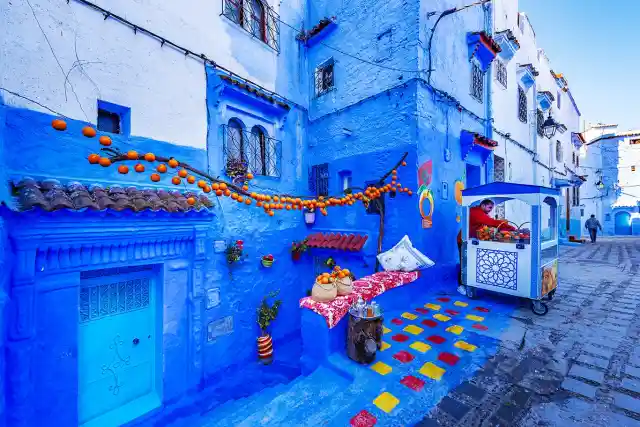
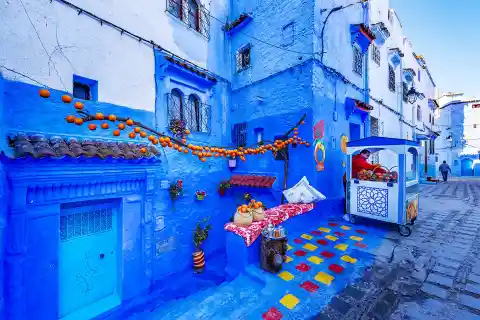
Nestled in the Rif Mountains, Chefchaouen is a photographer's paradise and a peaceful retreat for those seeking something unique. With open access to visitors, it invites exploration of its winding alleys, bustling markets, and the rich culture that makes this blue-hued city so enchanting.
Dwarf Village, China
The Dwarf Village in Kunming, China, is an unusual and controversial attraction, where all residents are people with dwarfism. Officially named the Kingdom of the Little People, this village was established as a tourist destination where residents perform shows, sing, and dance in fairytale-inspired costumes within a community designed specifically for them.
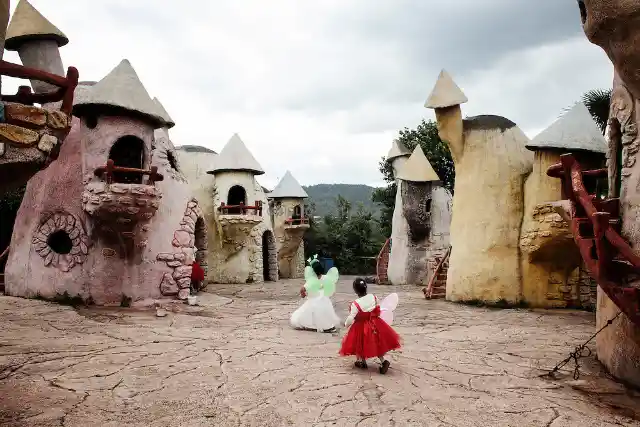

What makes it special is the surreal, fairytale-like setting and the opportunity for visitors to see a community that’s truly unique. However, the village has also drawn criticism for its exploitative nature. Nonetheless, it remains a freely accessible, curious destination for travelers looking for something completely out of the ordinary.
Larung Gar Buddhist Academy, Tibetan
The Larung Gar Buddhist Academy in Sertar County, Sichuan, China, is one of the largest centers for Tibetan Buddhist study in the world. Thousands of red wooden huts dot the hillside, home to monks and nuns living in devotion and simplicity.
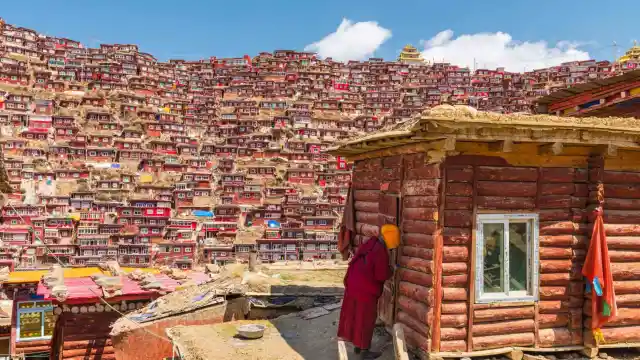
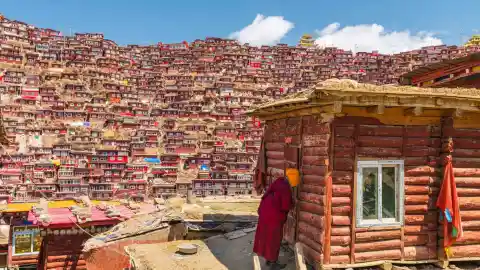
This densely packed, self-contained community creates a sea of red that’s visually stunning and deeply spiritual. Though access for foreigners is limited, those who visit glimpse a unique and vibrant monastic life nestled in the remote Tibetan landscape.
Hanging Temple, China
The Hanging Temple, or Xuankong Si, is an architectural marvel in Shanxi Province, China, clinging to the cliffs of Mount Heng. Constructed over 1,500 years ago, this temple complex is supported by slender wooden beams embedded into the rock, giving it a seemingly gravity-defying appearance.
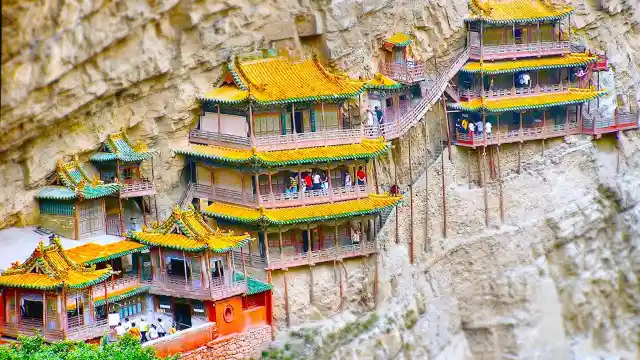
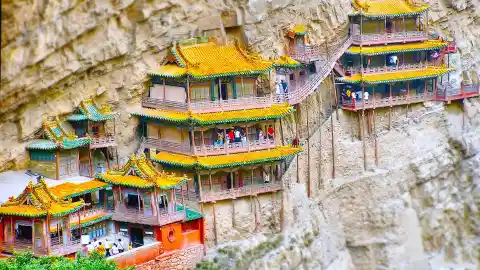
The temple is unique not only for its location but also for housing shrines dedicated to Buddhism, Taoism, and Confucianism—rarely found all in one place. Visitors can explore its narrow corridors and stunning cliffside views, making it an unforgettable experience in both spiritual and architectural heritage.
Najaf, Iraq
Najaf, Iraq is one of the holiest cities in Islam, particularly for Shia Muslims, as it houses the Imam Ali Shrine, the burial site of Ali ibn Abi Talib, cousin and son-in-law of Prophet Muhammad. This shrine, with its golden dome and intricate mosaics, attracts millions of pilgrims annually, making it a spiritual hub and a unique cultural experience for visitors.
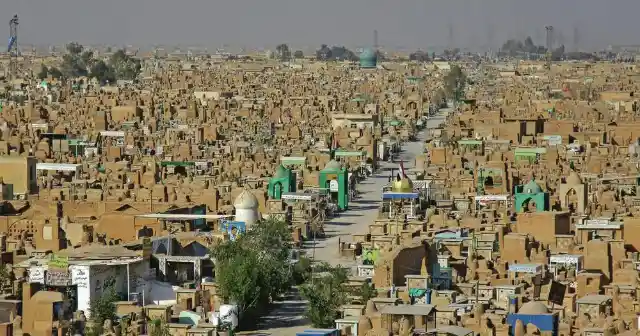
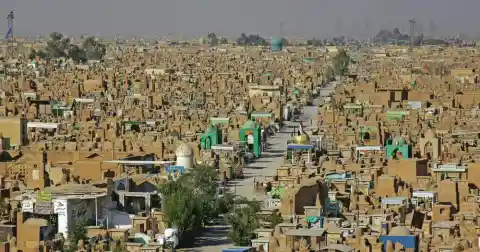
What makes Najaf especially fascinating is its vast Wadi-us-Salaam cemetery, the largest cemetery in the world, where millions have been buried over centuries. The city is a destination of deep religious significance, offering travelers a profound look into Islamic history and devotion in an atmosphere unlike anywhere else on Earth.
Setenil de las Bodegas, Spain
Setenil de las Bodegas, Spain, is a village unlike any other, with homes, shops, and cafes built directly into towering cliffs. Rather than constructing around the rock formations, the residents of Setenil embraced them, creating a unique town where streets are shaded by massive stone overhangs.
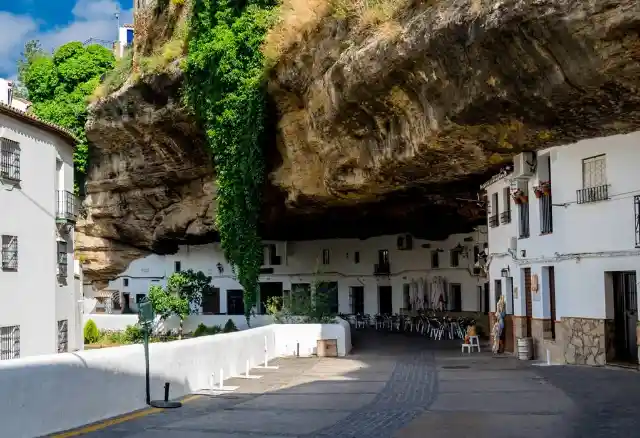
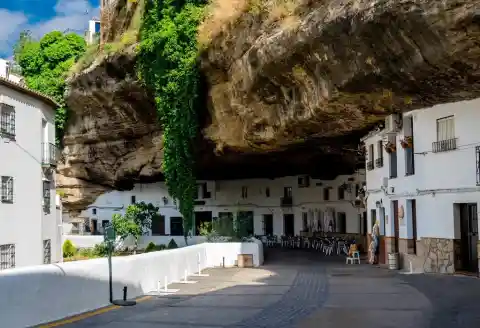
This charming, cave-filled village offers a one-of-a-kind experience for visitors who can freely wander its narrow, winding streets, marveling at the fusion of nature and architecture. Known for its cozy atmosphere and stunning views, Setenil de las Bodegas is an unforgettable stop for travelers looking for something extraordinary.
Coober Pedy, Australia
Coober Pedy, Australia, is famous as the "Opal Capital of the World" and for its unique underground lifestyle. Due to the intense desert heat, many residents live in dugout homes built into the hillsides, creating a subterranean town with churches, shops, and hotels below ground.
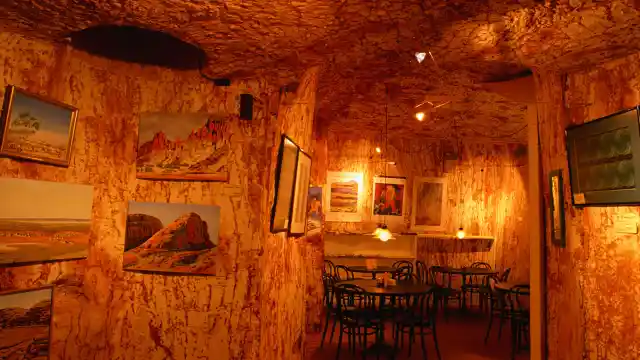
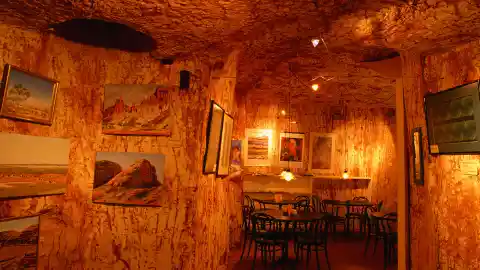
This quirky, hidden world offers visitors a one-of-a-kind experience, allowing them to explore opal mines and even stay in underground accommodations. Coober Pedy’s otherworldly landscape and inventive architecture make it a fascinating stop for adventurous travelers.
Slab city, USA
Slab City, California, is a unique desert community where people live entirely off-grid, embracing freedom and self-reliance. Known as "The Last Free Place in America," it attracts artists, wanderers, and those seeking an alternative lifestyle, with no formal infrastructure or services.
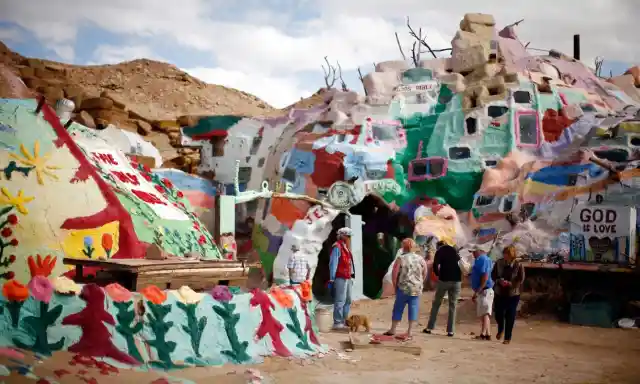
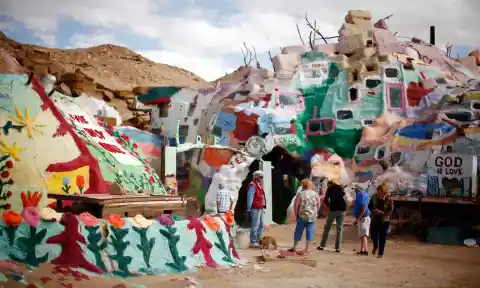
One of its main attractions is Salvation Mountain, a massive, colorful art installation covered in religious messages and bright paint. Slab City’s mix of creativity and rugged independence makes it an unusual destination for visitors intrigued by this raw, unconventional way of life.
Miyake-jima Island, Japan
Miyake-jima Island, Japan, is a volcanic island where residents live under the constant risk of volcanic eruptions and high sulfur gas levels. Due to this, everyone must carry a gas mask at all times and wear it when gas levels rise, creating an eerie, post-apocalyptic atmosphere.


Despite the risks, Miyake-jima is home to a resilient community and draws adventurous tourists interested in its volcanic landscapes. The island’s unique environment and the unusual precautions make it a one-of-a-kind destination for thrill-seekers.
Kowloon, China
Kowloon Walled City, once located in Hong Kong, was a densely packed, virtually lawless enclave that became famous for its maze-like structure and lack of government oversight. It was home to around 33,000 people within just a few city blocks, creating a tightly knit vertical community of interconnected buildings.


Known for its narrow alleyways, neon-lit signs, and chaotic design, Kowloon was demolished in 1993, but its legacy lives on as an icon of urban density and resilience. Today, visitors can explore a park built on its former site and learn about its fascinating history.
Taos, New Mexico
Taos, New Mexico, lures visitors with its enchanting landscapes, vibrant art scene, and ancient Pueblo heritage. One of its strangest claims to fame is the Taos Hum—a low-frequency noise that only some people hear, and no one can explain. This mysterious sound has puzzled scientists and sparked theories, adding an intriguing layer of mystique to the town.
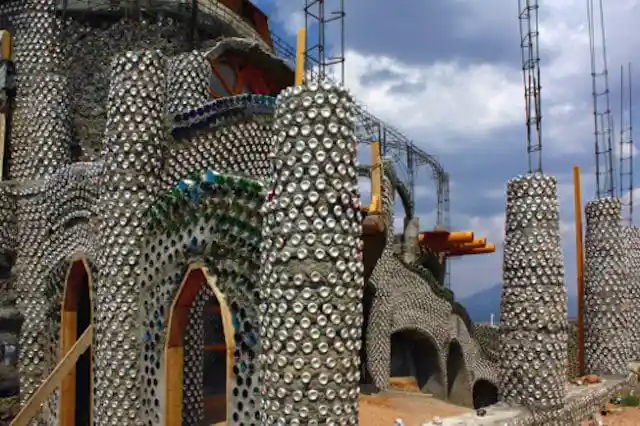
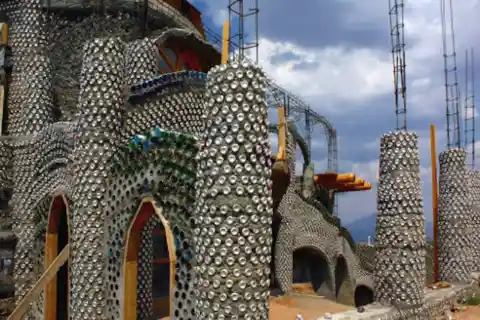
Beyond the hum, Taos captivates with its stunning adobe architecture, welcoming atmosphere, and spiritual vibe. As a freely accessible destination, it invites travelers to explore its galleries, enjoy its natural beauty, and experience the unique blend of mystery and charm that makes Taos unforgettable.
Meteora, Greece
Meteora, Greece is indeed famous for its monasteries perched atop towering rock pillars, which could resemble the concept in this image. However, while the Meteora monasteries are built on high rock formations, they aren't as dramatically isolated or positioned on such narrow peaks as shown here.
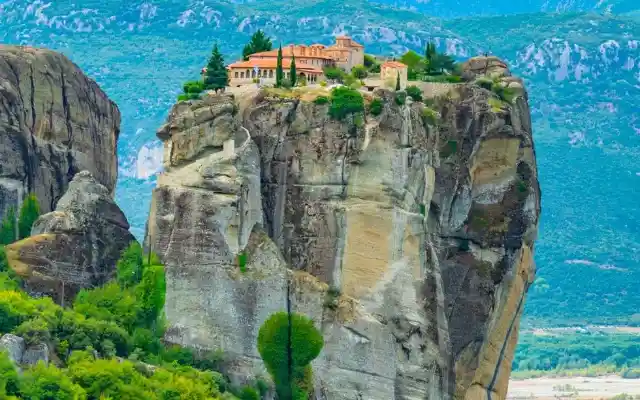
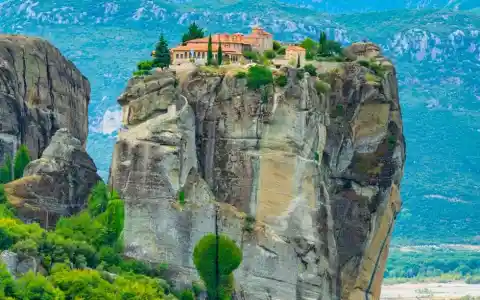
In reality, Meteora's monasteries sit atop broader rock formations and are accessible by stairs and paths, making them appear slightly more integrated with their rocky surroundings. The image you shared is more exaggerated in its isolated and narrow spire, leaning towards a fantastical style rather than Meteora's authentic layout.
Hashima Island, Japan
Once a bustling coal mining facility, Hashima Island (often called "Battleship Island") lies abandoned off the coast of Nagasaki, Japan. At its peak in the mid-20th century, the island housed over 5,000 workers in tightly packed apartment blocks, surrounded by concrete sea walls to protect it from rough ocean waves.
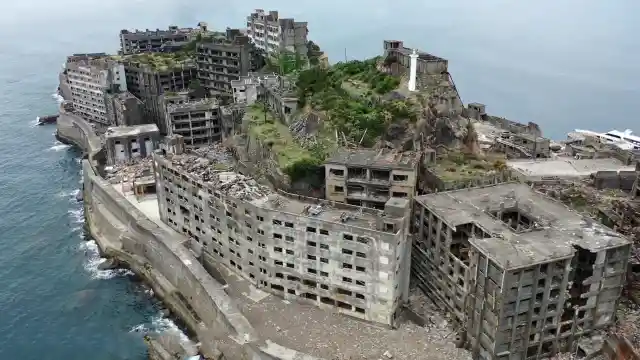
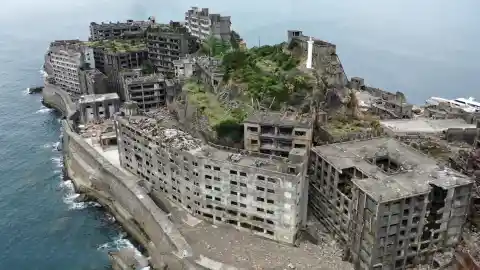
Today, Hashima is a ghost town, with decaying buildings and empty hallways overtaken by nature. This haunting island, accessible to tourists by guided tours, offers a stark glimpse into Japan’s industrial past and serves as a chilling reminder of the impact of rapid urbanization and decline.
Salar De Uyuni, Bolivia
Salar de Uyuni is the world’s largest salt flat, covering over 10,000 square kilometers in Bolivia. This vast, bright white expanse is left behind by prehistoric lakes and transforms into a massive mirror-like surface during the rainy season, reflecting the sky and creating a surreal, endless horizon.
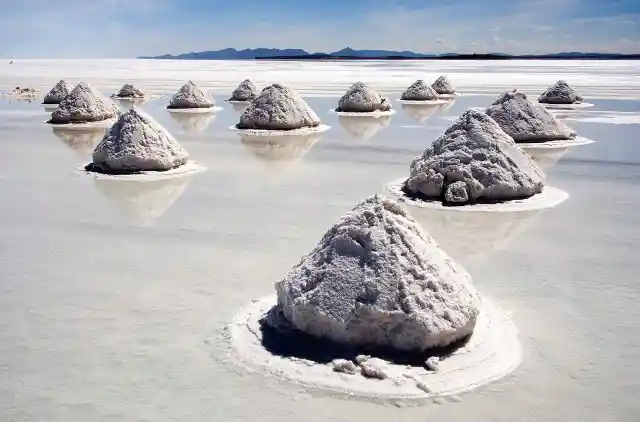
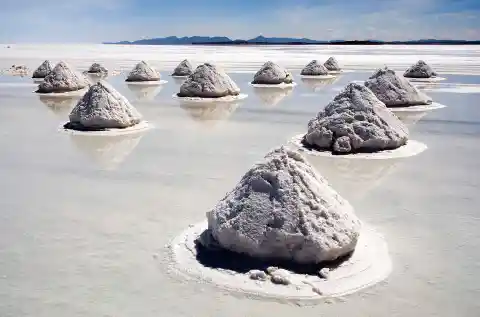
Visitors flock to Salar de Uyuni for its stunning, otherworldly landscape and photo opportunities, especially during the wet season. The salt flats also serve as a gateway to unique natural wonders, including vibrant lagoons, cacti-covered islands, and geysers, making it a must-visit for nature lovers and adventurers.
Giethoorn, Netherlands
Often called the "Venice of the North," Giethoorn is a picturesque village in the Netherlands known for its tranquil canals and charming, car-free streets. With no main roads, locals and visitors travel by boat or on foot, gliding along scenic waterways lined with thatched-roof cottages and blooming gardens.
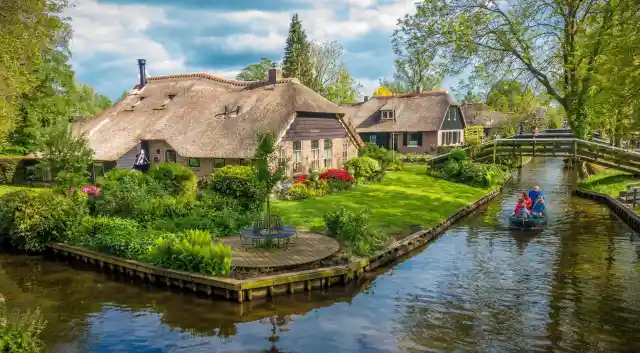
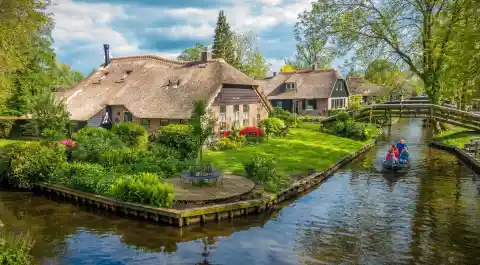
This idyllic setting offers a peaceful escape from the hustle and bustle, attracting travelers who want to experience a slower, more serene way of life. Giethoorn’s unique layout and fairytale-like beauty make it a memorable destination for those seeking a truly enchanting experience.
Pamukkale, Turkey
Pamukkale, meaning "Cotton Castle" in Turkish, is famous for its stunning white travertine terraces filled with mineral-rich thermal waters. These naturally formed terraces cascade down the hillside, creating a surreal landscape of bright white pools and rock formations that look like frozen waterfalls.
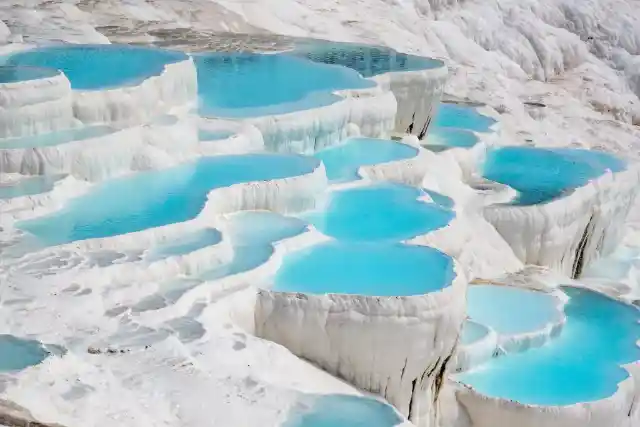
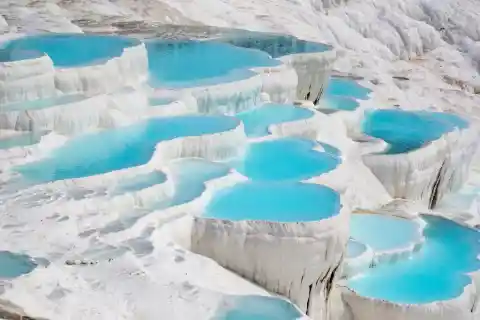
This UNESCO World Heritage Site is also home to the ancient city of Hierapolis, where visitors can explore ruins and bathe in the warm, therapeutic waters of ancient thermal pools. Pamukkale’s otherworldly beauty and historical significance make it one of Turkey’s most breathtaking and unique destinations.
Riomaggiore, Italy
Riomaggiore is a charming seaside village in Italy’s famous Cinque Terre, known for its colorful houses stacked along steep cliffs overlooking the Ligurian Sea. The vibrant, pastel-painted buildings and narrow, winding alleys give this town a unique, postcard-perfect appeal.
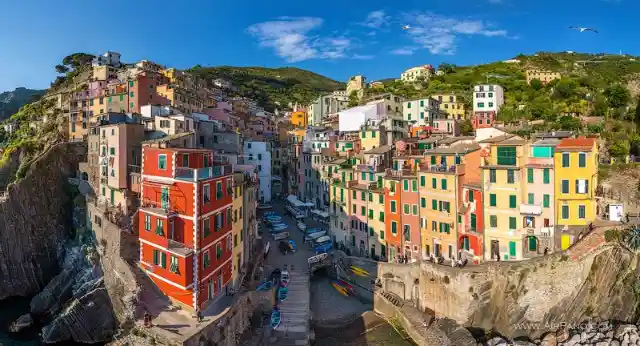
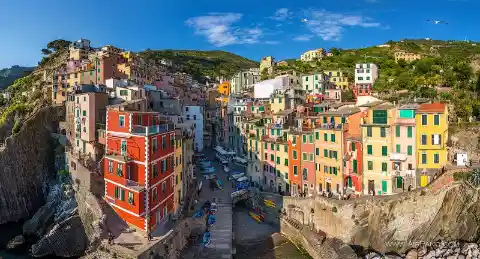
Visitors can stroll through the village’s picturesque streets, enjoy fresh seafood, and explore hiking trails that connect the Cinque Terre’s five stunning villages. Riomaggiore’s breathtaking coastal views and traditional Italian charm make it an unforgettable destination for travelers.
Danakil Depression, Ethiopia
The Danakil Depression in Ethiopia is one of the hottest and most inhospitable places on Earth, lying over 100 meters below sea level in the Afar region. Known for its extreme temperatures and alien-like landscapes, it features vibrant yellow sulfur springs, acidic hot pools, and vast salt flats created by tectonic activity.
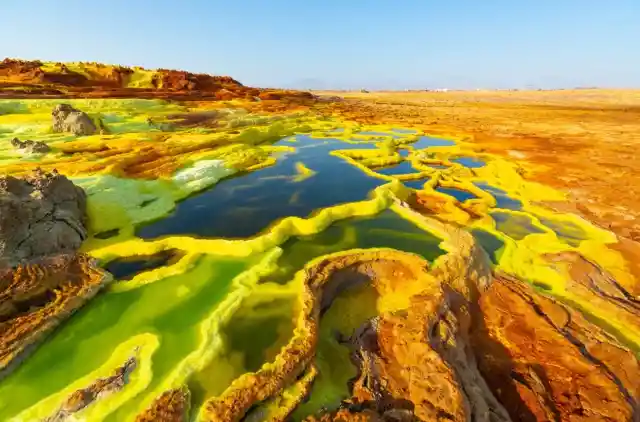
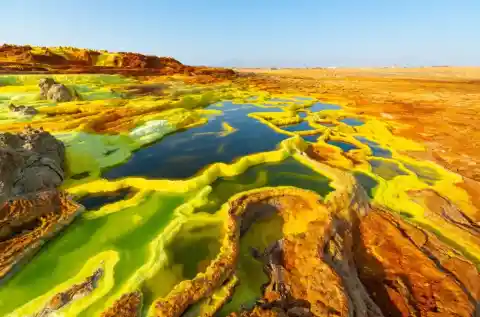
Despite the harsh environment, the depression is home to the Afar people and attracts adventurous travelers seeking a truly unique experience. The surreal, colorful mineral formations and active volcanoes make the Danakil Depression one of the most otherworldly landscapes on the planet.
Manshiyat Naser, Egypt
Known as "Garbage City," Manshiyat Naser is a district in Cairo, Egypt, where the majority of residents work in waste collection and recycling. The streets and rooftops are piled with sorted trash, which locals recycle to make a living, creating one of the most efficient waste management systems in the world.


Despite the rough environment, Manshiyat Naser is home to the Cave Church of Saint Simon, a massive rock-carved church that serves as a spiritual sanctuary for the community. This unique area offers a glimpse into a self-sustaining, industrious way of life, highlighting resilience and ingenuity amidst challenging conditions.
Neft Daslari, Azerbaijan
Neft Daşları, or "Oil Rocks," is a unique industrial settlement located in the Caspian Sea, 100 kilometers off the coast of Azerbaijan. Built in 1949, it is the world’s first offshore oil platform city, complete with roads, apartment buildings, and industrial infrastructure spread across a network of man-made islands and platforms.

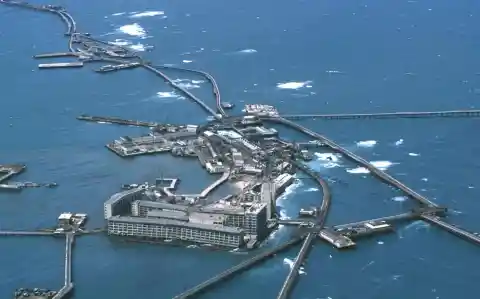
This floating city is a marvel of Soviet engineering, with over 300 kilometers of roads connecting various sections of the oil field. Though only partially inhabited today, Neft Daşları remains a fascinating symbol of human ingenuity, standing as a testament to Azerbaijan's rich oil industry history.
Auroville, India
Auroville, also known as the "City of Dawn," is an experimental township in southern India dedicated to human unity and sustainable living. Founded in 1968, it was envisioned as a place where people from around the world could live in harmony, free from politics, religion, and currency.
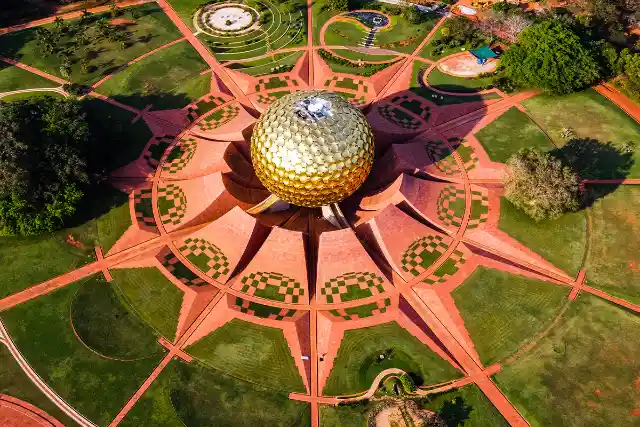
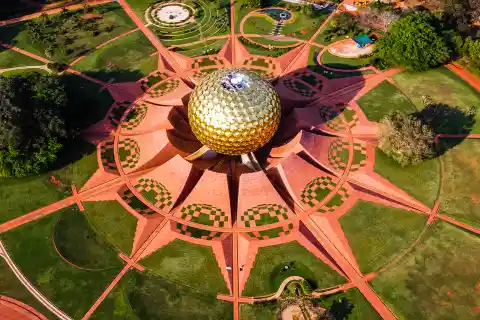
At the heart of Auroville lies the Matrimandir, a golden, dome-shaped structure meant for meditation and introspection. This unique community draws visitors interested in alternative lifestyles, spirituality, and eco-friendly practices, offering a glimpse into a utopian experiment that continues to evolve and inspire.
Poniente Almeriense, Spain
Poniente Almeriense is an agricultural region in Almería, Spain, known for its vast sea of greenhouses, often called the "Plastic Sea." Covering over 30,000 hectares, these greenhouses produce a large portion of Europe’s fruits and vegetables, visible from space due to their sheer size and reflective plastic roofs.
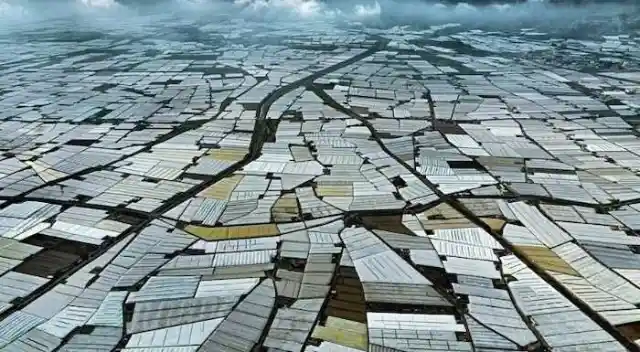
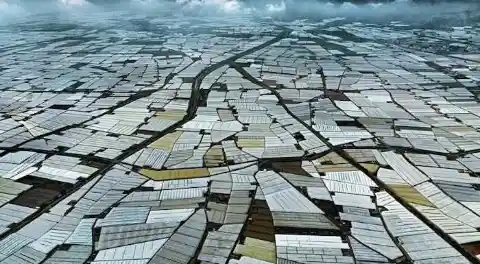
The unique landscape of white plastic structures creates a surreal, futuristic setting in an otherwise arid environment. Poniente Almeriense showcases the power of modern agriculture and provides a fascinating contrast between human ingenuity and the harsh natural landscape of southern Spain.
Isla de las Muñecas, Mexico
Located in the Xochimilco canals near Mexico City, Isla de las Muñecas (Island of the Dolls) is one of the eeriest tourist attractions in Mexico. The island is covered with hundreds of decaying dolls hanging from trees and structures, placed there by the late caretaker, Don Julián Santana, who believed the dolls warded off the spirit of a young girl who drowned nearby.
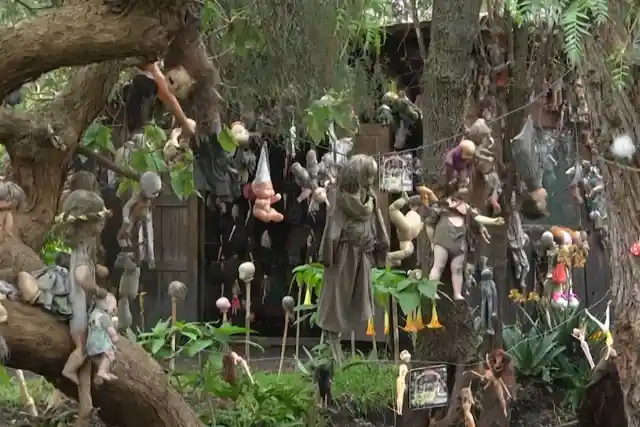

This haunting sight draws curious visitors intrigued by its ghostly atmosphere and chilling backstory. The island’s unsettling charm and mysterious legend make it a memorable, if spine-tingling, destination for those seeking something truly unusual.
Cat Island (Tashirojima), Japan
Tashirojima, also known as "Cat Island," is a small island in Japan where cats outnumber the human population. Originally kept to control mice in the island’s fishing community, the cat population has flourished, and the island has become a haven for cat lovers.


Visitors flock to Tashirojima to interact with the friendly felines that freely roam the island, lounging around shrines, cat-shaped lodges, and fishing docks. This charmingly unique destination offers a peaceful retreat for animal lovers, making it a paradise for anyone enchanted by cats.
Noiva Do Cordeiro, Brazil
Noiva do Cordeiro is a rural village in southeastern Brazil, famous for being predominantly inhabited by women. Founded by women over a century ago, the village has developed a strong, close-knit female community with unique social practices and values of cooperation and equality.


Men are often away for work, and the women of Noiva do Cordeiro manage the community's daily operations and decision-making. Known for its progressive outlook, the village has drawn interest worldwide as a symbol of female solidarity and independence, offering an inspiring glimpse into a community led primarily by women.
Hell, USA
Hell, Michigan, is a small, quirky town with a devilish sense of humor. Embracing its name, the town has turned "going to Hell" into a fun, lighthearted experience, complete with themed attractions, souvenirs, and even a "Hell’s Chapel" for weddings and events.


Visitors can "buy a piece of Hell" by renting land for a day, get "officially damned" with a certificate, or visit the Hell Saloon. With its playful, pun-filled atmosphere, Hell, Michigan, is a unique and amusing destination for travelers looking for a hellishly good time.
Cappadocia, Turkey
Cappadocia is renowned for its surreal landscape, featuring unique rock formations known as "fairy chimneys," ancient cave dwellings, and sprawling underground cities. Carved by volcanic activity and centuries of erosion, this region offers a glimpse into a fantastical world where history and nature blend seamlessly.
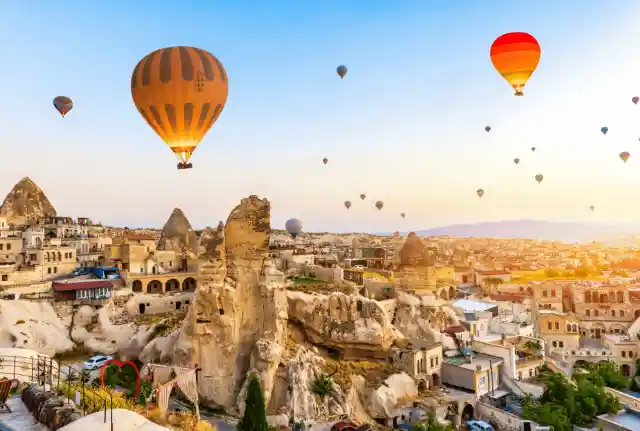
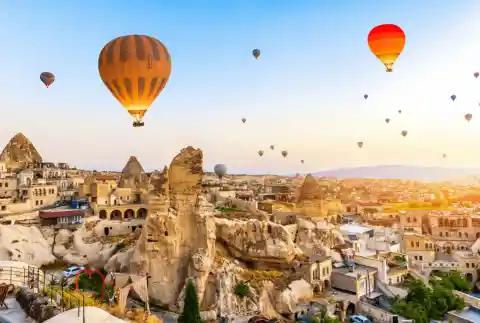
Visitors can explore ancient monasteries, stay in cave hotels, and take breathtaking hot air balloon rides over the stunning valleys. Cappadocia’s extraordinary terrain and rich cultural heritage make it a must-visit for those looking to experience one of the world's most otherworldly landscapes.
Matmata, Tunisia
Matmata, a village in southern Tunisia, is famous for its unique troglodyte homes, which are built underground to protect residents from the desert heat. These homes consist of large pits dug into the earth, with rooms carved into the surrounding rock walls, creating a network of cool, shaded living spaces.
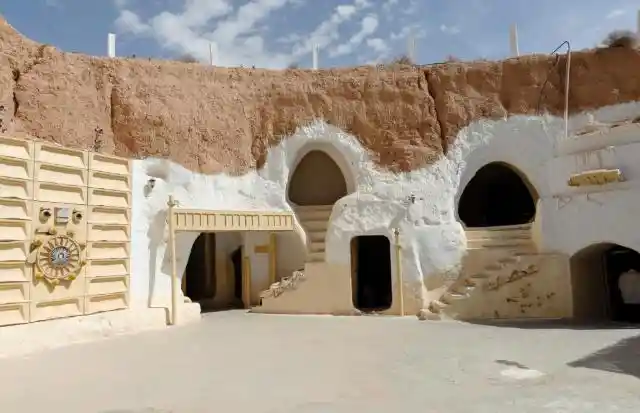
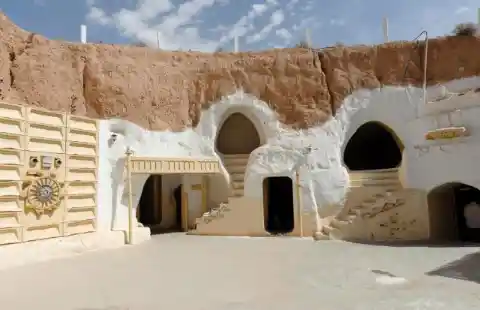
The village gained worldwide attention when it was used as a filming location for Star Wars, serving as Luke Skywalker's childhood home on Tatooine. Today, visitors can explore Matmata's fascinating architecture and even stay in some of the cave dwellings, experiencing life as the Berbers have for centuries.
Socotra, Yemen
Socotra is a remote island in Yemen, renowned for its alien-like landscapes and unique biodiversity. Isolated from the mainland for millions of years, Socotra is home to strange and rare plant species, such as the iconic Dragon’s Blood Tree, with its umbrella shape and red sap, and the bulbous Desert Rose.
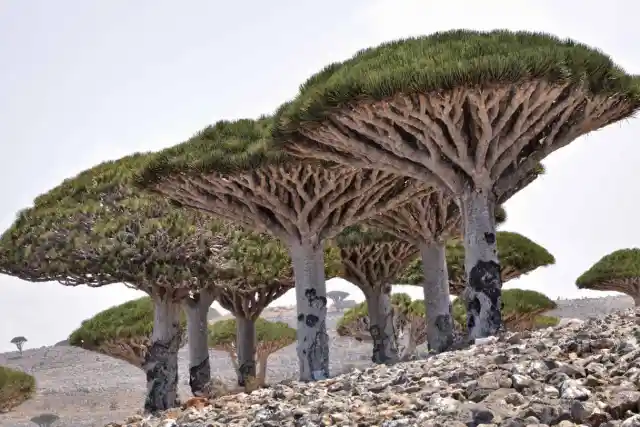
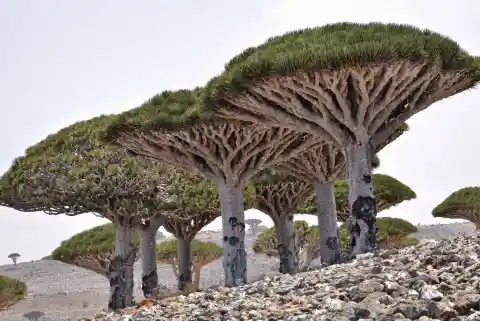
The island’s otherworldly scenery, pristine beaches, and vibrant coral reefs make it a paradise for nature lovers and adventure seekers. Socotra’s unmatched beauty and distinctive flora and fauna offer an experience like nowhere else on Earth, attracting those looking to explore a true natural wonder.
Vinicunca, Peru
Vinicunca, also known as the "Rainbow Mountain," is a breathtaking, multicolored mountain in the Peruvian Andes. The mountain’s vibrant stripes of red, yellow, green, and blue are a result of mineral deposits layered over time, creating a natural marvel that looks almost painted.
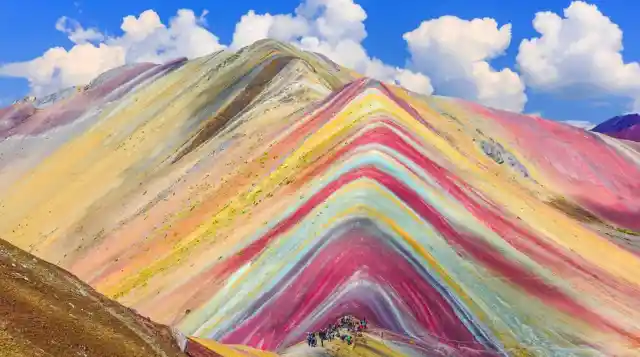

Located at high altitudes, Vinicunca attracts hikers and nature enthusiasts who endure a challenging trek to witness its stunning colors. The Rainbow Mountain has become one of Peru’s most iconic sights, offering travelers a one-of-a-kind view of Earth’s geological beauty.